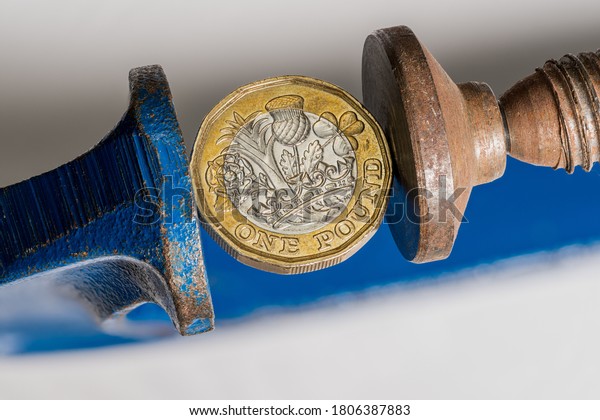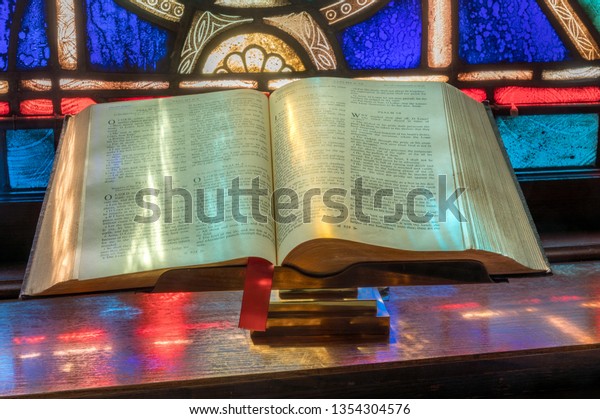Copyright for Stock Photographers
A long, long time ago I wrote about the copyright and model release issues that determined whether an image should be editorial or commercial usage but recently I got a message via my contact form from a photographer in the UK with this set of questions:
I have plenty of ideas for stock photos to take but one area I am struggling with is copyright/legal aspects. I could not find any posts on your website about this so wondered if you could share a bit of advice/guidance.
1) How do you determine if an image you will take, using say some coins (copyrighted by royal mint) or a dictionary definition (original work by creator) as a prop, will be in breach of copyright? To further the above example: There are lots of images on stock sites of jars of coins. The Royal Mint website seems to indicate these cannot be used for commercial gain so are these photographers breaking the law or have they all obtained permission to use the coins in their images?
2) If I submit an image to a stock site that is then purchased and misused by the purchaser, who is liable? So sticking with the coins example: lets say I take a picture of some coins meeting the conditions of the Royal Mint -editorial only say. The image is purchased and used to damage the Royal Mints reputation. Is that my liability or the purchaser of the image?
Good questions indeed! I recently produced this image of a UK coin that is for sale under a commercial license on Shutterstock and others:

Is this legal usage? Let me say up front that I am not a lawyer. I learned a lot from a book called the Photographers guide to Model Releases and from the authors great blog about all sort of business topics including copyright. So this is my understanding, but don’t bet the farm on it! There is also a US flavor (and spelling) to this post and different countries have different rules.
Starting at second question first. The stock agencies do have a good idea of what is a risky image from a legal or a claim perspective and they will reject images outright in some cases (like simple close ups of currency or banknotes) or will say that it can’t be licensed as a commercial image. You can then decide if you want to submit it as an editorial shot. Basically the difference is that an image that is being used for an editorial purpose – for commentary on things in the news, for educational purposes, in a text book or for an article describing something or someone – is not as subject to restrictions on what can be in the image. I do write more about this in my book and also talk about it on my video, but that is the main message. An image that is used commercially means that it is being used to promote a product or an idea or a position. So you can’t take a picture of a random person in the street and have it used to promote voting for a particular political party. You need a model release signed by the person for such a “commercial” use. Remember that commercial does not mean you are being paid for it – it is the use that is commercial, not the contract between you and them or via the agency.
So images of a bottle of coke with drops of water running down the surface can be used as an editorial image, but not as a commercial one without a release from Coca Cola.
Who makes the decision on how an image is used – the publisher of the article. Publishing, in the US at least, is the act of making the information available and pushed in front of a large audience. Publishing an article in a newspaper is the obvious one, putting it on an online site aimed at many people is another, but putting it on your own site for sale as a print is not seen as publishing even though you would like people to see it and buy it. The publisher is the one that determines the text around the image and whether it is simply being described or used to promote something and you have no control over that. So the Publisher is the one who takes the legal responsibility for the appropriate use of an image and takes the marking of “editorial” or “commercial” into account in publishing it. I’m sure the agencies make sure that it is their responsibility in their contract, although some, such as Pond5 offer to give some indemnification (ie money) if someone gets sued for using an image. They charge a higher fee for this and you do get your share of it as far as I know. Again, the agencies also state that we are responsible for the images we upload and must make sure we have appropriate rights to do so, although I have never heard of a contributor being brought into a lawsuit. Most of us don’t have enough money to make it worthwhile!
My understanding is that if someone in the UK used this image to bring the Royal Mint into major disrepute, it would be the publisher that the Mint would contact to discuss the usage.
UK coins and currency do have some rules about them – the Royal Mint has a page about it and my understanding is they are particularly protective of images of the Queen on currency, not so much the coin or banknote itself. That is just my understanding though.
The first question goes further into this area, but seems to be stumbling over the definition of “commercial” with the sentence about commercial gain. Remember, commercial is a usage criteria, not a financial one.
With entries from a dictionary or any other recent printed book, the author owns the copyright and so you can’t include anything that is identifiable as being from a particular book. The author or publisher of the book needs to be clear that it is their book or words. I had no issue with this image:

The design of a stained glass window is also copyright depending on its age, but in small amounts, no-one could tell where it was from or who had published the bible. The actual author is long dead, of course! Most people use words that are only visible in a small area, or have selective focus applied to them and certainly don’t include a characters name. I believe that the rule about needing a model or property release is that the general public should be able to work out who (or what) it is – not that the person themselves can do so. But again, just my understanding!
This one had to be editorial for all sorts of reasons:

I can use it here because I am not using it to sell tankards or my own version of a Game of Thrones story. It is editorial on stock agencies, but available as a print on Fine Art America (not that anyone has ever wanted it!)
So I hope that helps fill in some blanks.







That’s an informative insight Steve, thanks. I do seem to have ‘issues’ with what is or is not copyright in terms of buildings here in the UK. For example, is a building like a church (there’s one in the town where I live about 800 years old) which is certainly recognisable but not nationally well known, copyrighted? I’ve seen it on stock agencies both as commercial and editorial. I don’t expect you, or anyone else, to know whether that particular building is copyright but is just a general question that maybe some of your regular readers may have an answer to, especially if they are from the UK. I did ask Dreamstime about a castle photo (UK) that had been uploaded many times both under editorial and commercial (mainly the latter) and they said the editorial was due to that particular image having some text on a sign about the body that supported the castle financially. But the image of the same castle with no sign on it was OK for commercial purposes as it ‘very old and not considered copyright’ to use their words. Which brings me to thinking that any old building is ‘fair game’ if its doesn’t have signs on it or is not internationally recognisable. Whatever that is!
How do you go about deciding for yourself what is or is not commercial when photographing buildings in the US?
Sorry to waffle on so much – feel free to show me the cyber door !! 🙂
Thanks for your time Steve.
Andy
Hi Andy – no problem with complex questions!
First of all, copyright is a legal protection for ideas and designs and so the design of a building is copyrighted up to a time after the death of the designer. In the US I think it is currently 70 years following death – the UK is something similar. That is why old paintings, designs and photos from the 1910s are now copyright free and in the public domain. The physical implementation of the design is copyright as well, I think, and that stops someone building a similar building. Strictly speaking I suppose all modern buildings have a copyrighted design, but very few architects care about a photo of it – they see it as good publicity in most cases and how are they damaged by that photo? Trademarks are different and I think are registered to stop someone else using that design to promote their product. So a building design could be trademarked if it is used to promote some products associated with the building. Trademarks die if they are not renewed (I think). So old castles are never copyrighted now and rarely trademarked. The problem the agencies have is that theoretically, the designer of some 1960s building could sue one of their customers for some offensive use of a photo of that building – highly unlikely to happen, but they sometimes play on the safe side and say that such buildings should be editorial usage only. That doesn’t stop someone using the photo in an offensive way, but it offloads any liability onto the user of the photo.
As a result, most agencies are as much in the dark about these risks as we are. I can’t recall any lawsuits over a photo of a building to be honest.
The issue is complicated by who owns the land you are standing on when taking the photo – if it is public land then generally you can take your photo and do with it what you want. If it is private land then the land owner can restrict the use of photos taken from their land – the National Trust has strong restrictions on the use of photos of their properties, but this is a legal position based on them being the landowner and you are on their land and must follow their rules. It is not a copyright question.
So most buildings are fine, buildings in a cityscape are fine, old buildings are fine if you are on public land. Be more careful if you have had to buy a ticket to get into somewhere as the rules associated with the ticket might restrict you. Remove signs to avoid the issues that Dreamstime mentions.
Does that help?
Steve
It helps HUGELY Steve. Many, many thanks. You are very thorough with your answers to questions I (and others put) and very generous with your time. That’s so refreshing in todays ‘take, take, take’ world.
Take care Steve.